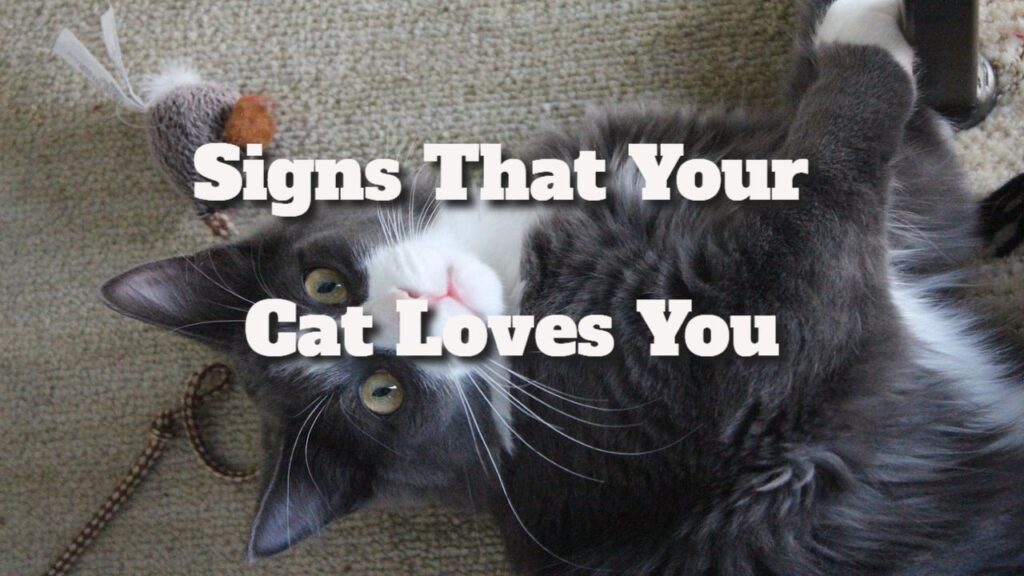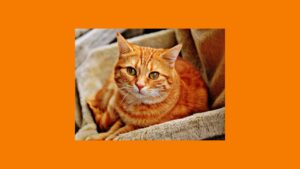Discover the Heartfelt Signs That Indicate Your Cat’s Affection
Understanding the emotional landscape of our feline friends can be quite a challenge since they often communicate in subtle ways. So, how do you decipher if your cat genuinely loves you? Our pets have unique methods of expressing their feelings, and observing their behavior can reveal much about their affection. By keeping an eye out for specific actions and signals, you can gain insights into your cat’s emotional state and the bond you share.
More often than not, your cat might just be your biggest admirer! Pay attention to these unmistakable signs of your cat’s unwavering love and loyalty.
Affectionate Grooming Rituals
Research indicates that when your cat grooms you, she considers you a cherished family member, despite being a larger version of a feline that might not excel in hunting. Grooming is an intimate behavior among cats, and if your kitty licks or nuzzles against you, it signifies her deep affection and acceptance. This act is akin to a cat’s way of saying, “You’re part of my family.” Additionally, playful nibbles from your cat can also be her way of showing love. While those sharp baby teeth may hurt a bit, it’s important not to react negatively, as this may confuse her. Instead, gently redirect her attention to a toy or a playful activity to maintain the positive vibe.
Meaningful Eye Contact
If you are curious about how to gauge your cat’s fondness for you, look for signs of comfort and security, especially in her gaze. Cats interpret direct eye contact from strangers—whether they are other cats or humans—as a sign of threat. If your cat meets your gaze with those big, beautiful eyes and even offers a slow blink, it’s a clear indication that she trusts you and feels safe in your presence. This gentle eye interaction is a profound sign of love and acceptance, making it one of the most powerful indicators of your cat’s affection.
Sweet Headbutts and Rubs
Cats possess scent glands located on their cheeks and foreheads, which they use to mark their territory. When your cat headbutts you or rubs her chin against you, it is her way of claiming you as her own and expressing affection. This behavior is a clear sign that she views you as part of her social group and feels a bond that goes beyond mere ownership. It’s a loving gesture that reflects trust and companionship, indicating that your cat wants to be close to you emotionally and physically.
Thoughtful ‘Gifts’ from the Hunt
When your cat presents you with a captured prey, it might seem puzzling at first. However, this behavior is rooted in instinct; she may be trying to teach you how to hunt, just as she would with her kittens. Cats often view their human companions as family members who need guidance in survival skills. This act of bringing you “gifts” is not only a testament to her hunting prowess but also a way to share and bond over her achievements, showcasing the depth of her affection for you.
Expressive Tails: A Window to Her Feelings
Your cat’s tail is a powerful communicator of her emotions and serves as a key to understanding her mood. When your cat approaches you with her tail held high, especially if the tip is twitching, it’s a universal sign that she feels happy and friendly. This expression of joy indicates that she appreciates your presence and wants to engage with you. A raised tail is essentially her way of saying, “I’m excited to see you!” and reflects her affection and comfort in your company.
Vocal Expressions of Love: The Art of Meowing
While adult cats rarely meow at one another, they often communicate with humans through their vocalizations. If your cat meows frequently, even when her basic needs are met, it’s likely her way of expressing affection and seeking companionship. Just like humans use words to communicate their feelings, your cat uses her voice to connect with you. This behavior shows that she not only enjoys your company but values the relationship you share.
Kneading: A Comforting Behavior Rooted in Love
Kneading is a behavior that many cats exhibit, often described as “making biscuits.” Although the reasons for this behavior can vary, it is widely believed to be a remnant of kittenhood when they kneaded their mother to stimulate milk flow. When your cat kneads on you, it signifies that she feels safe and content, viewing you as a source of comfort and security. If your furry friend loves to knead, consider placing a soft blanket between you to make the experience more comfortable for both of you.
Trust Signals: When Your Cat Chooses to Sleep on You
Your cat’s decision to curl up and take a nap on your lap is a powerful indicator of her trust and affection toward you. As natural hunters, cats are instinctively cautious and prefer to sleep in safe environments. By choosing to sleep on you, she is demonstrating a high level of trust and comfort, revealing her willingness to let her guard down in your presence. This intimate act showcases the bond you share and highlights your importance in her life.
Understanding the Cat’s Greeting: Presenting Their Behind
Cats have a unique way of greeting each other through scent, and presenting their behind is akin to a handshake in their world. While it may seem odd to us, this behavior signifies trust and friendship. When your cat turns her back to you and exposes her tail, she is essentially saying that she trusts you enough to share her scent, indicating that you are one of her closest companions. Embrace this quirky gesture as a testament to your special bond.
Understanding Catnip: Why Do Cats Love It?
If you’re a cat owner, you recognize the crucial role that play and stimulation play in enhancing your cat’s quality of life. Providing a variety of engaging toys and activities is essential to keep your cat entertained. Regular grooming and affection also play a significant part in your pet’s happiness. Occasionally treating your cat to catnip can add an exciting element to her playtime, making it a special experience for both of you.
What Exactly is Catnip?
Catnip, scientifically known as Nepeta cataria, is a herb that hails from the mint family and is renowned for its unique, aromatic scent. This versatile plant thrives in gardens and window boxes, making it a popular choice among gardeners. Catnip’s name comes from its fascinating impact on feline behavior. The nepetalactone chemical found in catnip repels insects while simultaneously attracting cats due to its resemblance to feline pheromones. The plant’s distinctive fragrance has been captivating cats for centuries, making it a staple in many households.
In the UK, dried catnip is readily available in pet shops, and as all dried herbs become more potent over time, the effects on sensitive cats can be noticeably enhanced. If you notice that your cat reacts strongly to catnip, it might be due to the heightened potency of dried forms.
The Effects of Catnip on Cats: What to Expect
Cats possess an extraordinary sense of smell, which makes the scent of catnip particularly enticing. When the plant is crushed or rubbed, it releases a strong aroma that can trigger playful and energetic behavior in cats. This fragrance mimics the scent of a female cat in heat, often causing a euphoric reaction that leads to playful antics. However, it’s important to note that not all cats respond to catnip, and some may exhibit only mild reactions or none at all.
Is Catnip Safe for Your Feline Friend?
Generally, catnip is deemed safe for cats and poses no significant risks. It grows readily and is widely accessible, offering short-term effects that can enhance your pet’s playtime experience. As a responsible cat owner, you can easily regulate your cat’s exposure to catnip, ensuring they do not overindulge. It’s worth noting that while cats often enjoy the scent of catnip, they don’t typically seek to consume it. If they happen to ingest a significant amount, it may lead to mild digestive upset, so it’s wise to monitor their behavior and consult with a veterinarian if any concerns arise.
Like many stimulants, moderation is key. Excessive exposure to catnip can lead to overstimulation, resulting in behaviors such as biting, scratching, or hyperactivity. If this occurs, it’s best to remove the catnip and allow your cat time to calm down and relax.
When introducing catnip into your cat’s life, do so gradually and in small doses. Treat it like a special reward rather than a daily necessity.
Why Do Some Cats Go Crazy for Catnip?
Every cat has its own unique relationship with catnip, and the reasons for their varying reactions can be quite fascinating. Research suggests that genetic predisposition plays a significant role, with some cats being more responsive to catnip than others. Depending on their genetic makeup, some felines may show little interest in catnip, merely sniffing it before walking away, while others may become hyperactive or euphoric.
Furthermore, the aroma of catnip mimics pheromones produced by female cats, which can trigger hormonal responses in male cats, leading to heightened excitement. This euphoric experience can manifest in playful behavior, with some cats exhibiting “zoomies”—a burst of energy where they dash around the house. Others may prefer a more relaxed approach, rolling around in the catnip or drifting off into a blissful nap.
Engaging Cat Toys to Keep Your Feline Entertained
Providing stimulating toys for your cat is essential for keeping her mentally engaged and physically active. Cat toys are not just for kittens; most adult cats also enjoy playtime, which is crucial for their overall well-being. Regular playtime helps reduce boredom and can prevent obesity, especially in indoor cats who may not get as much exercise. By offering a wide variety of toys, you can cater to your cat’s individual play style and preferences, ensuring she remains healthy and happy.
Every cat has different likes and dislikes when it comes to play. Some may enjoy chasing balls, while others prefer climbing or jumping toys. Explore the best cat toys we’ve compiled to discover your feline’s favorites and keep her entertained for hours.
Interactive Kicker Toys for Active Play
When cats catch their toys, they often perform the famous ‘bunny kick’ with their back legs. Kicker toys, kick bags, and kick sticks are fantastic for stimulating this natural hunting behavior, providing both physical and mental exercise. Even a simple soft toy can serve this purpose. Throw the kicker toy across the room and enjoy watching your cat chase after it, pouncing and kicking as she plays. These toys keep your cat engaged while satisfying her instinct to hunt.
Pouncing Toys: Fueling Your Cat’s Predatory Instincts
A cat’s instinctive predatory nature drives her to chase anything that moves, making pouncing toys essential for playtime. Whether it’s small balls or plush mice, these toys mimic the movement of prey and ignite your cat’s hunting instincts. You may even witness her trotting around proudly with her “catch” after she pounces on it! However, proceed with caution when it comes to laser toys. While they can be thrilling, cats may become frustrated if they can’t catch the light. To ensure a positive experience, keep laser play sessions brief and always provide a tangible toy for her to catch at the end.
Catnip-Infused Toys for Extra Fun
Catnip toys are a fantastic way to enhance playtime, as they contain the aromatic compound that stimulates a cat’s senses. These toys come in various forms, from herb-flavored kickers to pouncing toys, and even catnip bubbles. While catnip plants are readily available and easy to grow, catnip toys offer a convenient way to provide your cat with a stimulating experience. The effects of catnip typically last around 10 minutes, after which they may lose interest. Store catnip toys in a sealed bag when not in use to maintain their potency and keep your cat coming back for more!
Remember, cats can respond differently to catnip—some may become hyperactive and playful, while others may prefer a more laid-back approach. Up to 32% of cats might not react at all, and factors like age, gender, and neuter status can influence their behavior.
Engaging Cat Fishing Rod Toys for Interactive Play
Cat fishing rod toys are excellent for encouraging your cat to run and jump, mimicking the chase of birds or insects. These toys usually consist of a string attached to a rod with a toy at the end, making it easy for you to engage in interactive play sessions that benefit both you and your cat. It’s important to supervise these play sessions closely, as leaving your cat alone with string toys can pose a risk of entanglement or injury.
Brain-Teasing Cat Puzzle Toys for Intellectual Stimulation
Puzzle toys and food mazes are fantastic for keeping your cat mentally stimulated and engaged. These interactive toys often require your cat to solve a challenge—such as pushing, pulling, or moving parts—to access treats or kibble. By placing some of your cat’s daily dry food in one of these toys, you can create an enjoyable mealtime experience that encourages her to think and problem-solve. Start with simple designs and gradually increase the complexity to keep her interested and challenged.
Exciting Electronic Cat Toys for Modern Playtime
Electronic cat toys offer a variety of engaging options for your feline friend, ranging from remote-controlled mice to toys that mimic the movement of prey. These high-tech toys can provide endless entertainment and stimulate your cat’s hunting instincts. While they may be pricier than traditional toys, they make excellent gifts for special occasions. Just remember that electronic toys should complement, not replace, regular interactive playtime with you. Your cat still craves the connection and engagement that comes from spending time with her human.
Providing Scratching and Climbing Opportunities for Your Cat
Scratching and climbing are natural behaviors for cats, so if you notice your cat scratching furniture or climbing on shelves, she’s simply expressing her instincts. Providing her with a designated scratching post or climbing tree can help redirect these behaviors and prevent damage to your belongings. A well-designed cat tree not only gives her a place to scratch but also offers elevated spots for her to observe her surroundings and feel safe. When playtime is over, she can retreat to her cat tower for rest and relaxation, creating a secure environment for her to unwind.
Crafting Homemade Cat Toys for Budget-Friendly Fun
To keep your cat’s interest alive, rotate her toys regularly to prevent boredom. While buying a variety of toys can become expensive, the good news is that many cats find homemade toys just as delightful as store-bought ones. Craft simple toys using items you already have at home, such as crumpled foil or paper balls for batting around. You can also create kicker toys from old socks filled with catnip. Another easy DIY project is to use empty cardboard tubes or boxes to create puzzle toys by hiding treats inside. Cats love to explore and will enjoy the challenge of discovering hidden treasures. Even a simple cardboard box can provide hours of entertainment—fill it with crumpled paper or leaves and watch your cat dive in for a fun treasure hunt!
The post Signs That Your Cat Loves You appeared first on Unity Pets.
The Article Signs That Your Cat Loves You was found on https://limitsofstrategy.com




Your exploration of feline affection resonates deeply with my experience as a cat owner. I’ve often noticed how my cat approaches grooming rituals, and it really feels like a shared moment of trust and connection. It reminds me of the nurturing bonds that exist not only in the animal kingdom but also among us humans. Interestingly, many cultures view pets as family members, recognizing their ability to enhance our emotional well-being. This makes me wonder—could the way our pets express love inspire us to communicate more openly and lovingly with those around us? How do you think our relationships with animals can reflect and even improve our connections with each other? I’d love to hear others’ thoughts on this as well!
Your reflection on feline affection really highlights something meaningful about our relationships with animals. I’ve had similar experiences with my own cat, especially during those quiet moments when they choose to curl up next to me or groom themselves while I’m nearby. It’s remarkable how these simple acts can foster such a deep sense of trust and connection. It goes beyond just having a pet; it feels like entering a silent pact of companionship.
It’s interesting how those quiet moments with our cats can really underscore the depth of our connections. I’ve found that it’s in those simple acts, like your cat curling up next to you, that I sometimes feel the weight of the world lifted, if only for a moment. There’s something so peaceful about just being present with them, isn’t there?
Those quiet moments you shared with your cat are so special, and it’s interesting how they can reveal the depth of our connections with these animals. When a cat chooses to curl up beside us or groom themselves nearby, it’s as if they’re sharing a little piece of their world, inviting us into a bond that is both comforting and profound.
I really enjoyed your insights on the subtle ways cats express their affection. It’s fascinating how much we can learn about their emotional landscapes if we just pay attention. One sign that has always tugged at my heartstrings is when my cat, Luna, brings me “gifts”—even if they are just her toy mice. It’s her way of showing love and perhaps even a desire to share her “hunting” triumphs, which I think is just so endearing.
It’s amazing how our cats communicate their love in such unique ways. Luna’s gift-giving is a classic cat behavior that reflects both affection and instinct. When a cat brings you a “gift,” it’s like she’s sharing a piece of her world with you. In the wild, a mother cat does this to show her kittens how to hunt, so it’s really touching that Luna thinks of you in this way.
It’s great to hear you enjoyed the piece! Luna’s “gifts” really do speak volumes about her affection—it’s like she’s saying, “Hey, look what I’ve brought you, I care about you!” Those little toy mice can feel like a token of her love and maybe even a little pride in her hunting prowess.
You’ve really captured the essence of those little moments we share with our pets. It’s fascinating how animals have their own ways of expressing love. When Luna brings those toy mice, it’s almost like a unique language between you two. It’s a blend of instinct and affection.
I always thought my cat was just using me as a personal blanket when she starts purring and kneading on my lap! Who knew I was actually a member of her grooming squad? It cracks me up how she’ll lick at my hair like she’s trying to groom me for a cat show, yet you won’t catch her doing the same with her own fur—it’s like I’m her project!
Isn’t it funny how pet dynamics can be so complex yet adorable? Your cat’s behavior really does reflect that blend of affection and instinctual behavior we see in the animal kingdom. I’ve noticed similar traits in my own cat; she’s a real purr machine when she’s settled on my lap, and it’s like I’ve been promoted to her cuddle buddy and stylist all at once.